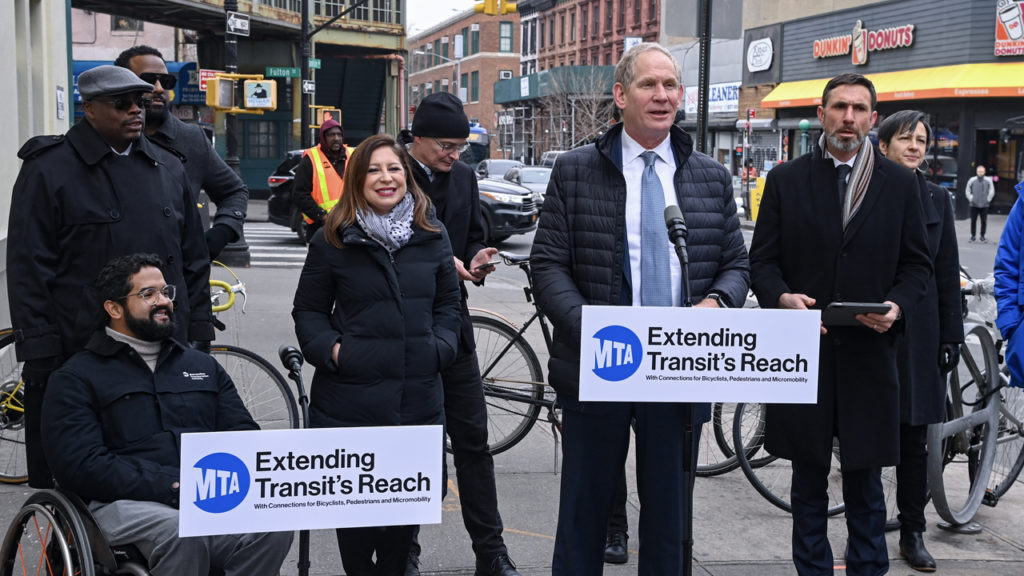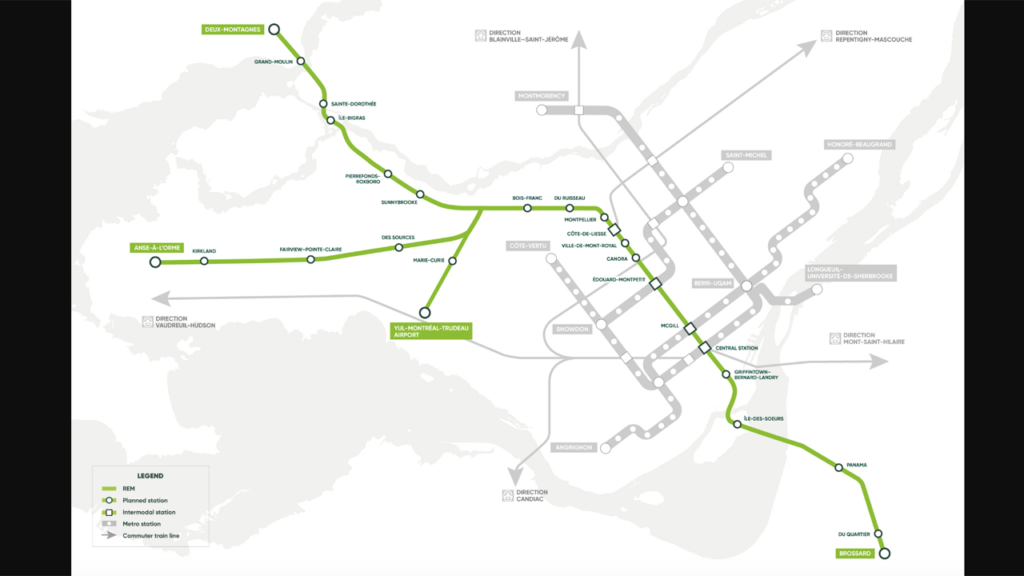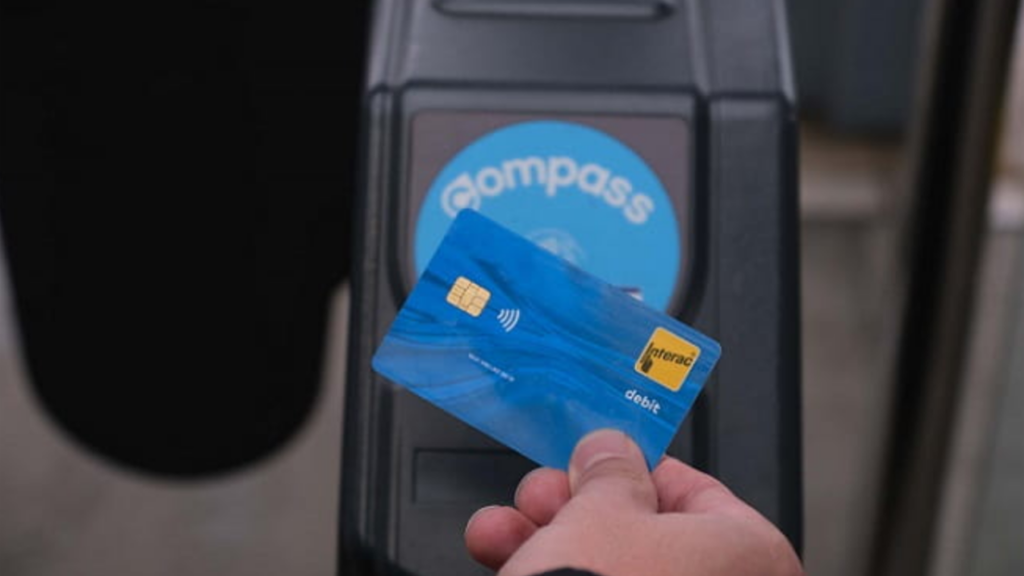
Transit Briefs: Amtrak, NYMTA, City of Montreal, TransLink
Written by Marybeth Luczak, Executive Editor
Amtrak is awarding 11 scholarships to undergraduate and graduate students, who have “an active interest in the railroad industry.”
Applications are now being accepted for Amtrak’s scholarship program. Also, New York Metropolitan Transportation Authority (MTA) unveils a strategic action plan to improve bike, pedestrian, and micromobility access at and near its facilities; city of Montreal advances the Western Link Kirkland project, providing access to the Prairies River and a new Réseau express métropolitain (REM) train station; and metro Vancouver’s TransLink fully integrates contactless Interac Debit payments systemwide.
Amtrak on Jan. 12 reported that it will award 11 scholarships to undergraduate and graduate students, who have “an active interest in the railroad industry.”
To support and encourage achievement in rail, Amtrak said that scholarships are for:
- High school seniors who identify as Hispanic/Latinx, African American, or Asian American/Pacific Islander.
- Women in STEM degree candidates (students pursuing an undergraduate or master’s degree majoring in science, technology, engineering or math).
- Engineering degree candidates (students with an interest in rail engineering).
- IT degree candidates (students in information technology, computer science or a similar field).
- Non-technical degree candidates (students in business, finance, marketing, supply chain or a similar field).
- Children, spouses, civil union partners or domestic partners of Amtrak employees, retirees or furloughed employees (A. Philip Randolph scholarship).
Scholarships will help full-time students with tuition, fees, books and/or equipment.
Amtrak said students are encouraged to submit more than one application if the criteria is met; only one scholarship will be awarded per person within the academic year. The submission deadline is Jan. 31, 2023 at 11:59 p.m. ET.
“As we continue to revolutionize the Amtrak experience, hiring to address significant demand is essential,” Amtrak Executive Vice President and Chief Human Resource Officer Qiana Spain said. “Amtrak is creating a talent pipeline to invest in the future and address this new era of rail.”

The New York MTA on Jan. 11 released “Extending Transit’s Reach,” a strategic action plan to improve integration between the transit system and bicyclists; pedestrians; and users of shared or personal electric-powered bikes or scooters, known collectively as micromobility devices. The 92-page plan also covers coordination with the New York City Department of Transportation (NYC DOT) and other regional stakeholders “to achieve more seamless, multimodal integration and connectivity for cyclists, pedestrians, and micromobility users.”
According to MTA, front-of-bus bike racks will be installed on three Select Bus Service routes (M60 SBS, S79 SBS, and Q44 SBS), spanning four boroughs. Additionally, building on a partnership with NYC DOT to install bike racks near the entrances of the 37 subway stations that do not currently have bike parking, MTA will install bike racks at five MTA Long Island Rail Road and 13 MTA Metro-North Railroad stations, bringing the percentage of suburban commuter rail stations in New York with bike parking to 85%.
The new plan, MTA said, also outlines improvements that will be made to pathways at facilities operated by MTA Bridges and Tunnels.
“It’s time for the MTA to fully embrace bicycle, pedestrian and micromobility access as we plan and expand New York’s transit system,” MTA Chair and CEO Janno Lieber said. “Extending Transit’s Reach provides a framework to better integrate MTA subway, bus and commuter rail service with the ways that New Yorkers are increasingly using to get around. It will enable the MTA to attract new riders to the system, and to harness increasingly popular modes of transportation to essentially expand the transit system.”

The city of Montreal has awarded a C$4.4 million contract to professional services firm GHD for design and construction services for the new Western Link in Kirkland. GHD on Jan. 11 reported that the 1.86-mile multi-use bridge will provide access to the Prairies River and the new Kirkland REM train station (see map above), allowing pedestrians and cyclists to cross Highway 40 safely. Local architects STGM Architecture and SidLee Architecture are part of the GHD team executing the project.
GHD will handle contract administration and geotechnical and environmental services; and provide a detailed design of the pathway and pedestrian bridge, and technical assistance throughout the project.

TransLink on Jan. 11 reported that it has become the first transit agency in Canada to fully integrate contactless Interac Debit payments systemwide—at every fare gate and on every bus. TransLink services include SkyTrain, West Coast Express commuter rail, and Coast Mountain Bus Company.
As part of its Customer Experience Action Plan, TransLink said that it worked with Interac, Moneris and Cubic Transportation Systems to upgrade more than 5,000 Compass Readers. Riders can now board transit by using Interac Debit with physical cards or through smartphone digital wallets. They can also pay with contactless credit cards, digital wallets, Compass Cards, Compass Wristbands, and Compass Minis.
“We’re focused on making transit more convenient for customers and this upgrade will particularly benefit those who may not have easy access to a credit card,” TransLink CEO Kevin Quinn said. “We were the first transit agency in the country to implement contactless credit card payments, and we’re proud to be the first transit system in Canada to implement contactless Interac Debit payments systemwide as well.”



